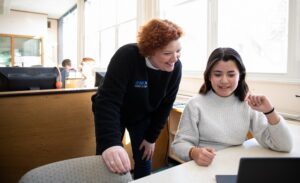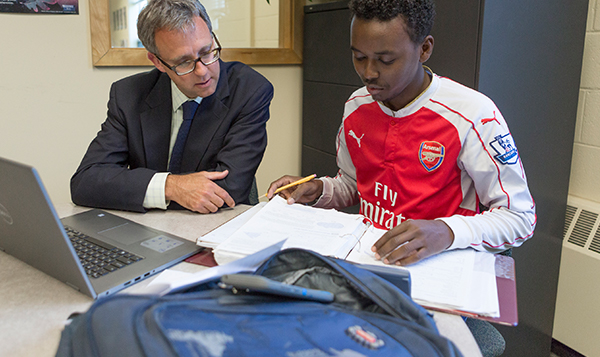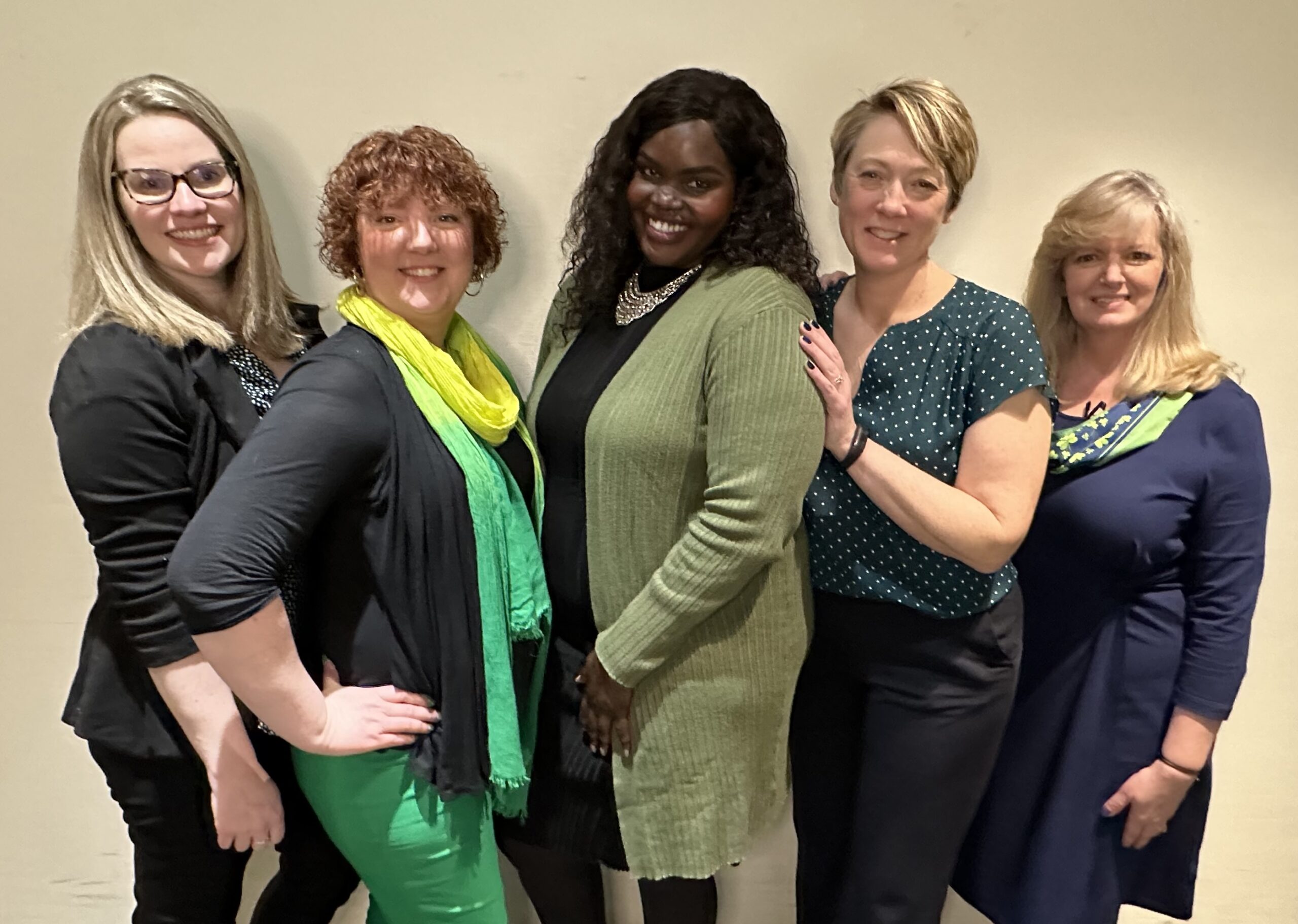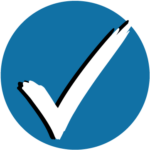Managing money is something every college graduate will have to do, regardless of the type of degree they obtain, their career, or their salary. However, very few higher education institutions require a personal finance class prior to graduation. While many schools try to offer programming supported by the financial aid office, career center, TRIO programs, or local banks, the common complaint is lack of student attendance and engagement. One solution is Peer Education.
What is Peer Education?
Peer education is an approach to education through which community members are supported to promote behavioral change among their peers. When a person hears information from their peer versus an outside expert, they are far more likely to either retain the information or take action. In fundraising, studies have shown people are 300 times more likely to donate if they are asked by someone they know rather than a stranger or organization (hence why crowd sourcing has become such a popular form of fundraising). Students often feel intimidated by an older adult speaking to them about money. “They don’t get me”. “They don’t know what it’s like to be a college student in 2022”. Hearing information from someone with a shared experience gives the speaker credibility and a stronger sense of trust.
Peer education has been used in a number of different health initiatives including safe-sex practices for AIDS prevention in Africa, drug and alcohol education among college students, and domestic and sexual violence reduction among athletes. The most prominent example of peer education being used for financial literacy is Indiana University’s MoneySmarts program. Their office of financial literacy hires students to become trained peer educators who work one-on-one with students needing financial assistance to create a budget, manage debt, and create a plan for saving. The office also manages an online platform, on-campus presentations, a cost of attendance/loan payoff calculator, and offers three financial wellness literacy courses. Since the office was founded in 2011, they have seen $126.4 million reduction in student borrowing, and a 19% decrease in student borrowing across all campuses. The program has seen such success and growth that their directors started the Higher Education Financial Wellness Summit, an annual conference where higher education professionals can come to learn more about how to grow (or start) their own financial wellness program. Here are some sources that further support why the peer education model works:
Quick Facts
Peer-to-peer financial education enhances youth learning
https://www.canr.msu.edu/news/peer_to_peer_financial_education_enhances_youth_learning
Role of peers and social media in building financial literacy among millennials
https://www.tandfonline.com/doi/full/10.1080/23311886.2021.1947579
Building an effective peer-to-peer financial literacy program
Making the Case
For the organization
- Ensuring students receive financial and student loan education leads to reduced borrowing, lower default rates and can help increase retention rates by reducing the number of students dropping out due to financial reasons.
- Admissions can use the program as a recruitment tool. Financial education is appealing to many prospective families. Parents want to know their child is going to be taught important life skills and be prepared for life after graduation.
- Improved student satisfaction
- More financially stable alumni may could lead to an increase in donor potential
- Increased FAFSA completion rates
- Greater resources for at-risk student groups (those failing to meet satisfactory academic progress (SAP), low income and first gen students)
- Potential to reduce student account holds due to unpaid balances
For students
- Improved financial wellness can lead to financial stability and improved overall health and financial wellness
- Ability to make informed decisions around borrowing and financial aid, which may lead to a decrease in borrowing
- Potential for less student loan debt
- Greater ability to deal with or avoid financial crisis
For peer educators
- Resume item, job experience, future job opportunities
- Improved soft skills, such as public speaking and presenting skills, handling confidential and sensitive information and conversations, potential for management experience
- Improved financial wellness
- Build and strengthen relationships with other offices on campus
- Ability for creative expression
- Professional development opportunities and certifications
Program Example and Best Practice: UMF Financial Literacy Peer Education Program
The UMF Financial Literacy Peer Education Program provides comprehensive education to college students concerning financial wellness. The initiative trains college students to educate their classmates about all things related to money management. The program’s mission is to increase the financial knowledge of Maine students by providing them with student led informational programming regarding personal finance, student loan borrowing, default prevention, and financial aid. The program hires and trains between four to eight peer educators (student employees) who report to the program coordinator. The students and coordinator work together to schedule programs and events, create education collateral, and conduct one-on-one counseling for students seeking additional assistance. The peer educators receiving training on FAFSA filing, basic tax preparation, financial aid and borrowing options, and basic financial wellness topics (budgeting, short- and long-term savings, investing, affording the cost of living for both on and off campus options, and student loan repayment/forgiveness options). While the coordinator provides guidance, on-going training, and supervision, much of the content is created by the peer educators. This includes presentations, brochures, marketing materials, and social media campaigns. The program coordinator is also responsible for developing pre/post event surveys, analyzing the data, and reporting out quarterly regarding any grant or funding sources.
The Path to a Successful Program
Assessment
- Create a student survey or conduct student interviews or focus groups to determine causes of financial stress, and gaps in financial knowledge.
- Evaluate and understand the key causes of student financial stress, including any gaps in financial knowledge.
Define Program Goals, Measurements of Success, and Key Campus Partners
- Sample goals: increase FAFSA filing, decrease overall student borrowing, decrease number of private/PLUS loans needed, increase default prevention (and subsequently decrease delinquencies and default rates), increase retention, decrease the number of students who have billing holds their account each semester
- Sample measurements: increase completed FAFSAs by 25% (or increase number of attendees to a FAFSA filing event), hold 16 events per academic year with a target audience of X students at each event (number based on overall student body), or X number of visits to program website
- Campus partner examples: admissions, orientation, Trio/First Gen programs, career counseling, student life, resident life, first year student offices, student employment, events/conferences, JMG
Scope
- Select size of program: will you serve the entire student body or offer programming to specific student groups?
- Ensure financial inclusion: consider target audience such as people of color, women, and financially vulnerable populations.
- Select educational delivery method(s): online tutorials/courses, website tools, classroom and webinar presentations, and one-on-one counseling.
- Determine program incentives, if available. Considering partnering with another office or business.
Funding
- Grants (state or foundation)
- Tuition and fees: in some cases, new programs or offices can be funded through increasing certain student fees, like an activity fee or programming fee. The increase in fees could be used to cover the cost of the program.
- Fundraising: many banks and financial institutions offer funding for financial education, but often have a difficult time using the funds. Often, bank sponsored financial education events on campus have low turnout rates. Consider reaching out to your local financial institution to sponsor your peer education program. It’s a win-win! A successful partnership can benefit the bank because they want their customers to save, invest, and use their products. Often, staff members (bank managers, financial advisors, mortgage lenders, etc.) are willing to come in and assist in peer educator training. Examples of places to ask include:
- Local bank or credit union
- Local or statewide financial institutions
- Office of the treasurer or Attorney General
Timeline
- Determine the timeframe and length of program, including training, frequency of workshops and events, coaching sessions.
- Create a plan for onboarding new students and determine eligibility for any mid-year hires.
- Hiring/training process
- Hiring: create job description(s) and share on student employment websites, work with student employment to determine official job title and pay structure.
- Recruitment: contact key campus partners for hiring recommendations. Most successful candidates tend to come from education majors, business/finance majors, admissions ambassadors, resident assistants, and students who have thrived in the TRIO programs. Look for students with some or all of the following qualities:
- Outgoing- the educators will need to feel comfortable talking with students, families, faculty, staff, and presenting to groups of people.
- Self-starter- the best peer educators are the ones who think of the information they want to learn more about, research the topic, and create either programming or collateral around it. You can offer them a list of contacts, encourage them to reach out regarding your objective and they’ll get it done. Bonus if they initiate follow-ups.
- Willingness to work with all types of students- if a student has a bias towards a certain group or type of student, it can not only impact the reach of your program but also the credibility.
- Ability to keep confidential information confidential
- Creative- whether they are artistically creative, or creative in how they present information, this is a key factor if you want to create engaging programs and content.
- Desire to help others and have a positive impact on their community
- Hiring: create job description(s) and share on student employment websites, work with student employment to determine official job title and pay structure.
- Recruitment: contact key campus partners for hiring recommendations. Most successful candidates tend to come from education majors, business/finance majors, admissions ambassadors, resident assistants, and students who have thrived in the TRIO programs. Look for students with some or all of the following qualities:
- Outgoing- the educators will need to feel comfortable talking with students, families, faculty, staff, and presenting to groups of people.
- Self-starter- the best peer educators are the ones who think of the information they want to learn more about, research the topic, and create either programming or collateral around it. You can offer them a list of contacts, encourage them to reach out regarding your objective and they’ll get it done. Bonus if they initiate follow-ups.
- Willingness to work with all types of students- if a student has a bias towards a certain group or type of student, it can not only impact the reach of your program but also the credibility.
- Ability to keep confidential information confidential
- Creative- whether they are artistically creative, or creative in how they present information, this is a key factor if you want to create engaging programs and content.
- Desire to help others and have a positive impact on their community
- Hiring: create job description(s) and share on student employment websites, work with student employment to determine official job title and pay structure.
- Recruitment: contact key campus partners for hiring recommendations. Most successful candidates tend to come from education majors, business/finance majors, admissions ambassadors, resident assistants, and students who have thrived in the TRIO programs. Look for students with some or all of the following qualities:
- Outgoing- the educators will need to feel comfortable talking with students, families, faculty, staff, and presenting to groups of people.
- Self-starter- the best peer educators are the ones who think of the information they want to learn more about, research the topic, and create either programming or collateral around it. You can offer them a list of contacts, encourage them to reach out regarding your objective and they’ll get it done. Bonus if they initiate follow-ups.
- Willingness to work with all types of students- if a student has a bias towards a certain group or type of student, it can not only impact the reach of your program but also the credibility.
- Ability to keep confidential information confidential
- Creative- whether they are artistically creative, or creative in how they present information, this is a key factor if you want to create engaging programs and content.
- Desire to help others and have a positive impact on their community
Training
- Determine length of training. For example, should you host a one-week training camp? This is the most effective way to train students as there are many limitations once the school year begins including, but not limited to time, space, salary restrictions, etc. While this may work well as a fast, immersive training experience before school starts, it logistically could be difficult based on conflicting trainings (sports, RA training, etc), available housing, and salary limitations. If possible, use outside funding or university funding (such as department funds or university work study) to pay students and NOT federal work study as this will use up most of their available funds.
- If a training camp is not available, try to have all basic training completed by the end of September so that peer educators are ready to assist with FAFSA filing in October.
- Use weekly meetings to hold ongoing training throughout the year, direct educators to complete webinars or other professional development opportunities and use event and counseling session observations for individual assessment and feedback.
- Work with campus partners to collaborate on training opportunities they may already be hosting (particularly helpful with the RA training sessions). Collaborate with other departments or offices to see if they can offer training to your educators. For example: the career center may host a workshop on creating a professional LinkedIn account.
- For returning students, seek summer professional development opportunities such as the HEFWA student experience.
Marketing and Community Partners
- Marketing: create branding, slogans, perhaps even your own logo, order promotional items to use as giveaways, have t-shirts or outerwear made for educators to wear at events, create both educational and promotional collateral
- Social media: program specific social media account, work with marketing to include promotion and occasional high priority announcements on institution’s social media, including content that is student driven
- Identify campus specific methods of promotion (campus portal, TVs in student union, student e-newsletter, posters, flyers in bathrooms, tabling etc).
Best Practices for Student Engagement
- Face to face- nothing beats in person events, promotion, etc. Particularly with online platforms such as iGrad and ECMC, an in-person registration event/demo is more effective than asking students to register via email. A captive audience is even better. Work with professors to present in their class. Work with RAs (who already have programming requirements) to plan an in-dorm event.
- Tabling is a great way to create awareness and get students to sign up for your events or services as well as hand out branded swag.
- Never underestimate the draw of free food or other incentives to get students to attend events or workshops.
- Giveaways/door prizes are a great way to get students to either engage with your social media accounts or get students to attend your programming.
- Use free online platforms such as iGrad as an incentive for at risk students. For example, if a student requests a FAFSA filing extension, have them complete 1-2 courses in iGrad first before granting the extension. If a student is attending a help session for those failing to meet SAP, integrate some iGrad courses into the sessions.
Learn more about the CFPB’s Five Principals for Financial Education and How to Use Them
Resources and Professional Groups
- FREE online financial wellness at FAME.igrad.com.
- Maine Jump$tart Coalition for Personal Financial Literacy: FAME is a founding supporter of the Maine Jump$tart Coalition for Personal Financial Literacy, whose mission is to improve the financial knowledge of Maine citizens, with a special focus on pre-K through college students, including adult learners. The Coalition has compiled a number of resources through the Maine Financial Education Clearinghouse.
- Association for Financial Counseling & Planning Education: AFCPE® accredited financial counselors and coaches offer unbiased and fully confidential virtual financial counseling and coaching sessions – free to individuals and families who are struggling with the financial implications of COVID-19.
- Financial Planners (CFP): Find local certified financial planners who are available to provide professional advice in creating a financial roadmap. Whether you are seeking one-time advice or a more holistic life plan for your financial future, a CFP® professional is a trusted guide in the process.
- Financial Counselors (NFCC): Certified counselors are available to help with a plan to pay off debt, preserve or achieve homeownership, understand bankruptcy options, and offer financial tools and educational resources. They offer guidance about credit, debt, student loans, homeownership, mortgages, foreclosure prevention, bankruptcy, and small business ownership.
- HEFWA-The Higher Education Financial Wellness Alliance is beneficial for training both staff and peer educators, a beneficial alliance to join, and they host an annual summit in the summer
- Indiana University Money Smarts program– the gold standard of higher education financial literacy programming
- Melmac Education Foundation– The MELMAC Education Foundation is committed to supporting high quality initiatives that serve the purpose of increasing educational opportunities for Maine people. The Foundation believes that Maine people and the State of Maine will thrive in the new economy by providing access to the appropriate education, skills and training at all levels.
- NASFAA/EASFAA/MASFAA– These are the National, Eastern, and Maine (respectively) Association for Financial Aid Administrators.
- Ca$h Coalition of Maine– CA$H Maine is a statewide collaboration of ten coalitions, comprised of 50 non- and for-profit partners, working together to help empower Maine individuals and families to achieve long-term financial stability.Maine Credit Unions
- NextGen Personal Finance: their mission is that every U.S. high school student will graduate having taken a one-semester course in personal finance by 2030.
FAME is here for you!
FAME provides FREE resources and information, including online financial wellness courses and videos, to help Mainers become more financially savvy.
For technical assistance, please contact:
Mary Dyer, Financial Education Programs Manager, Finance Authority of Maine
mdyer@famemaine.com or 207-620-3556
Mary can help you with questions about:
- How to get started
- Strategies for selecting peer educators
- Potential grants and funding
- Resources and training opportunities
- Financial wellness programming and event ideas
The Finance Authority of Maine (FAME) provides links to other websites as a convenience and does not endorse or guarantee the content accuracy or usability of such sites.





